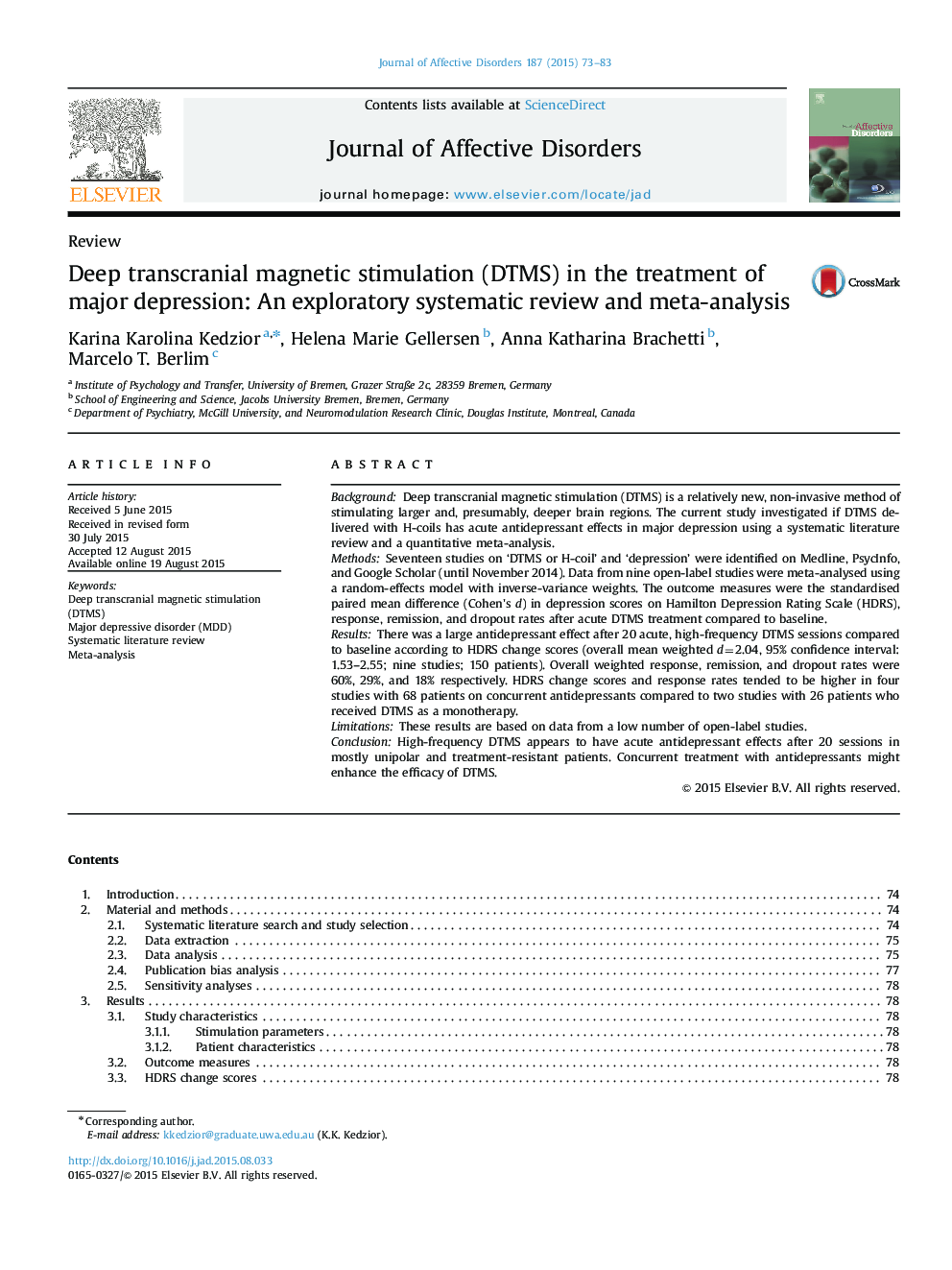| کد مقاله | کد نشریه | سال انتشار | مقاله انگلیسی | نسخه تمام متن |
|---|---|---|---|---|
| 6230956 | 1608138 | 2015 | 11 صفحه PDF | دانلود رایگان |

- High-frequency deep transcranial magnetic stimulation (DTMS) has antidepressant properties in mostly treatment-resistant patients with unipolar depression.
- Acute, 20 daily sessions of DTMS reduced depression severity based on data from nine open-label studies with 150 patients.
- The acute response, remission, and dropout rates were 60%, 29%, and 18% respectively.
- All antidepressant effects tended to be lower in studies with DTMS as a monotherapy compared to studies with DTMS as an add-on to pharmacotherapy.
BackgroundDeep transcranial magnetic stimulation (DTMS) is a relatively new, non-invasive method of stimulating larger and, presumably, deeper brain regions. The current study investigated if DTMS delivered with H-coils has acute antidepressant effects in major depression using a systematic literature review and a quantitative meta-analysis.MethodsSeventeen studies on 'DTMS or H-coil' and 'depression' were identified on Medline, PsycInfo, and Google Scholar (until November 2014). Data from nine open-label studies were meta-analysed using a random-effects model with inverse-variance weights. The outcome measures were the standardised paired mean difference (Cohen's d) in depression scores on Hamilton Depression Rating Scale (HDRS), response, remission, and dropout rates after acute DTMS treatment compared to baseline.ResultsThere was a large antidepressant effect after 20 acute, high-frequency DTMS sessions compared to baseline according to HDRS change scores (overall mean weighted d=2.04, 95% confidence interval: 1.53-2.55; nine studies; 150 patients). Overall weighted response, remission, and dropout rates were 60%, 29%, and 18% respectively. HDRS change scores and response rates tended to be higher in four studies with 68 patients on concurrent antidepressants compared to two studies with 26 patients who received DTMS as a monotherapy.LimitationsThese results are based on data from a low number of open-label studies.ConclusionHigh-frequency DTMS appears to have acute antidepressant effects after 20 sessions in mostly unipolar and treatment-resistant patients. Concurrent treatment with antidepressants might enhance the efficacy of DTMS.
Journal: Journal of Affective Disorders - Volume 187, 15 November 2015, Pages 73-83